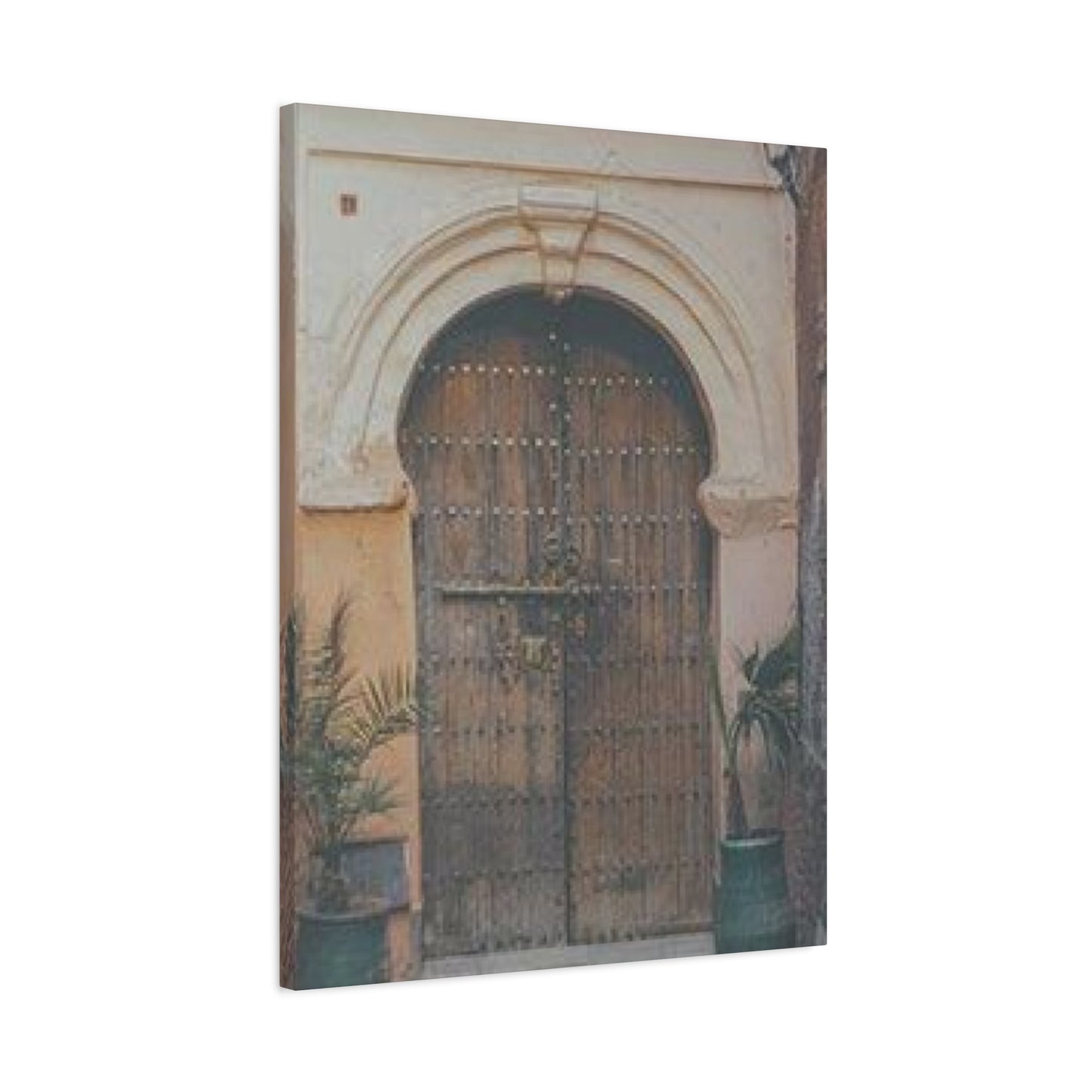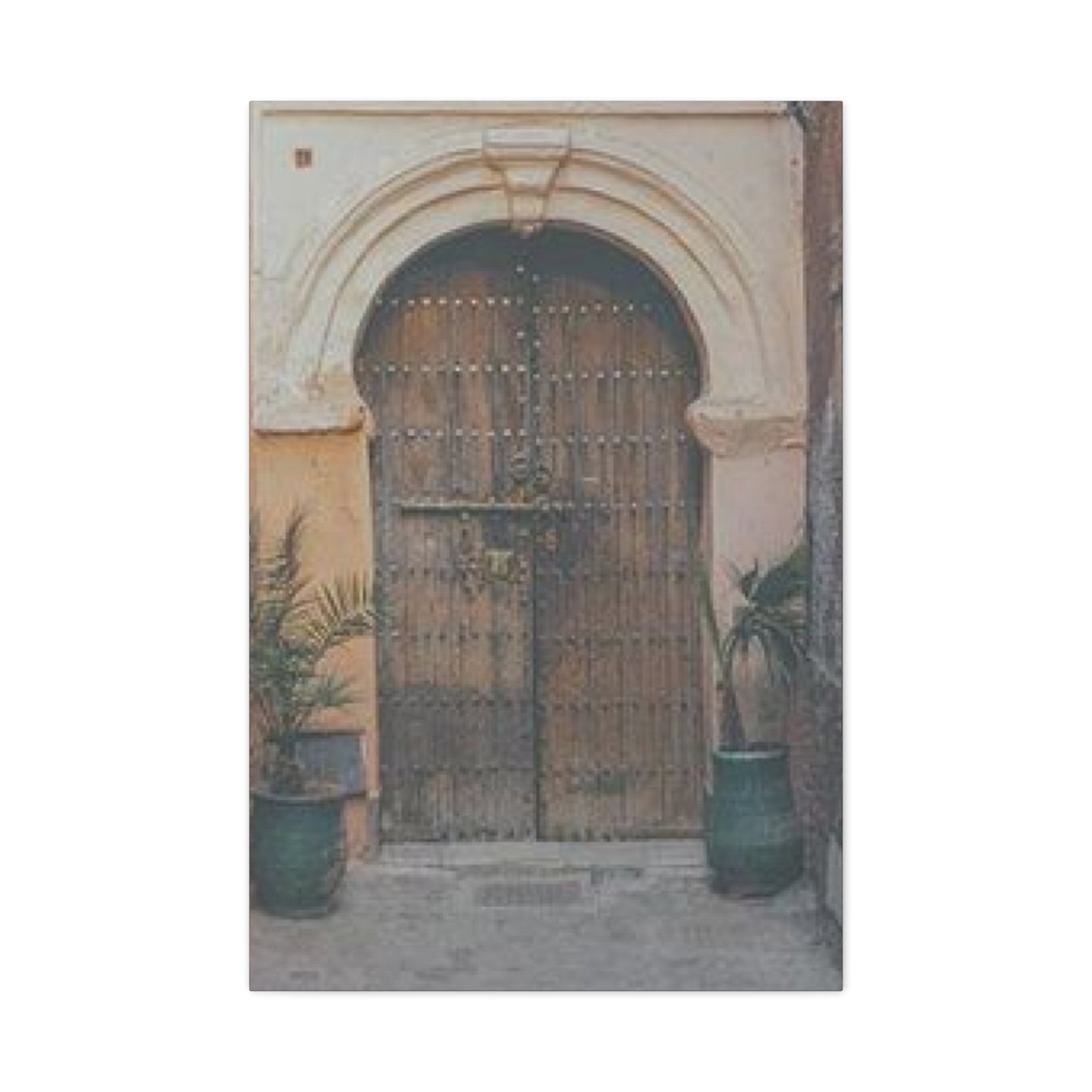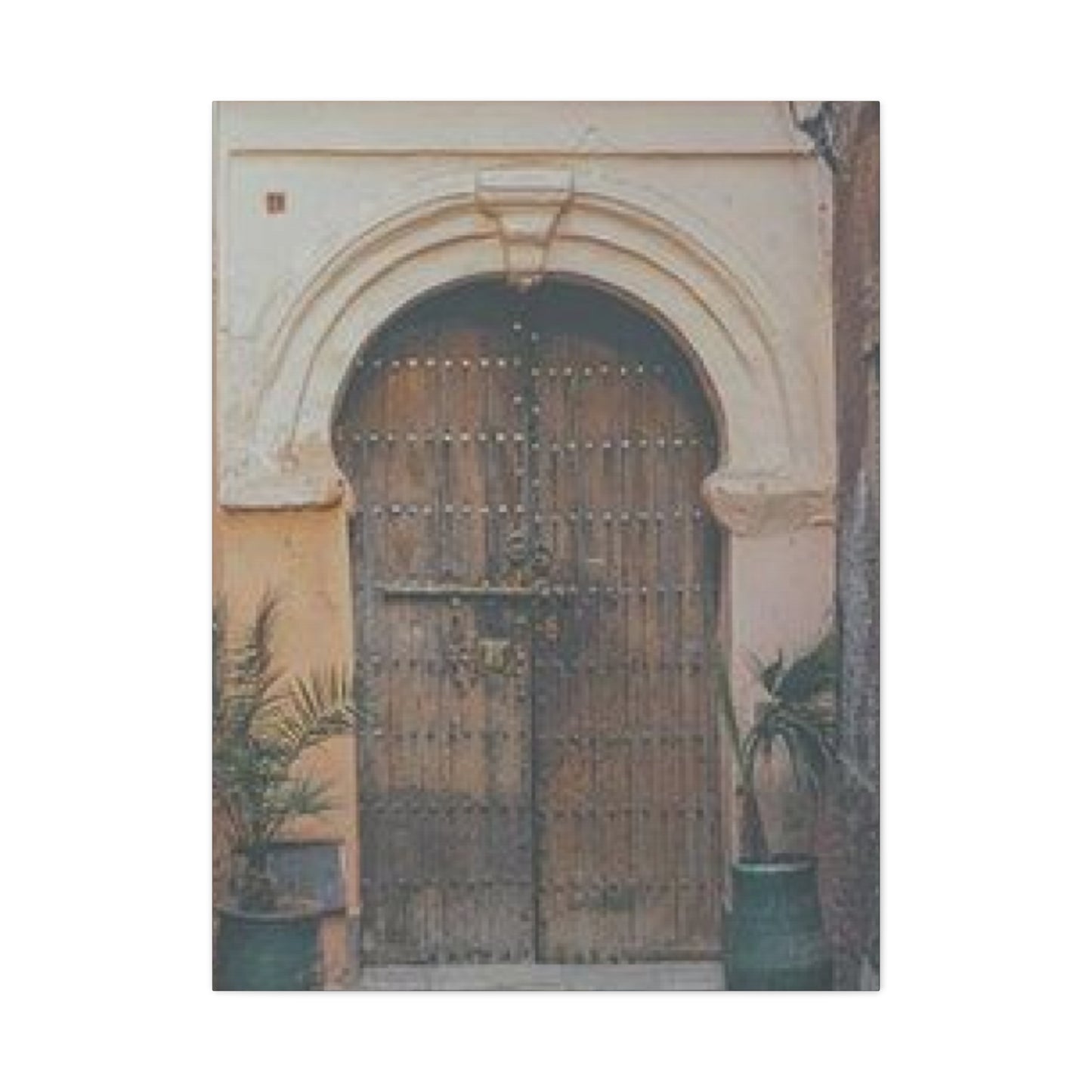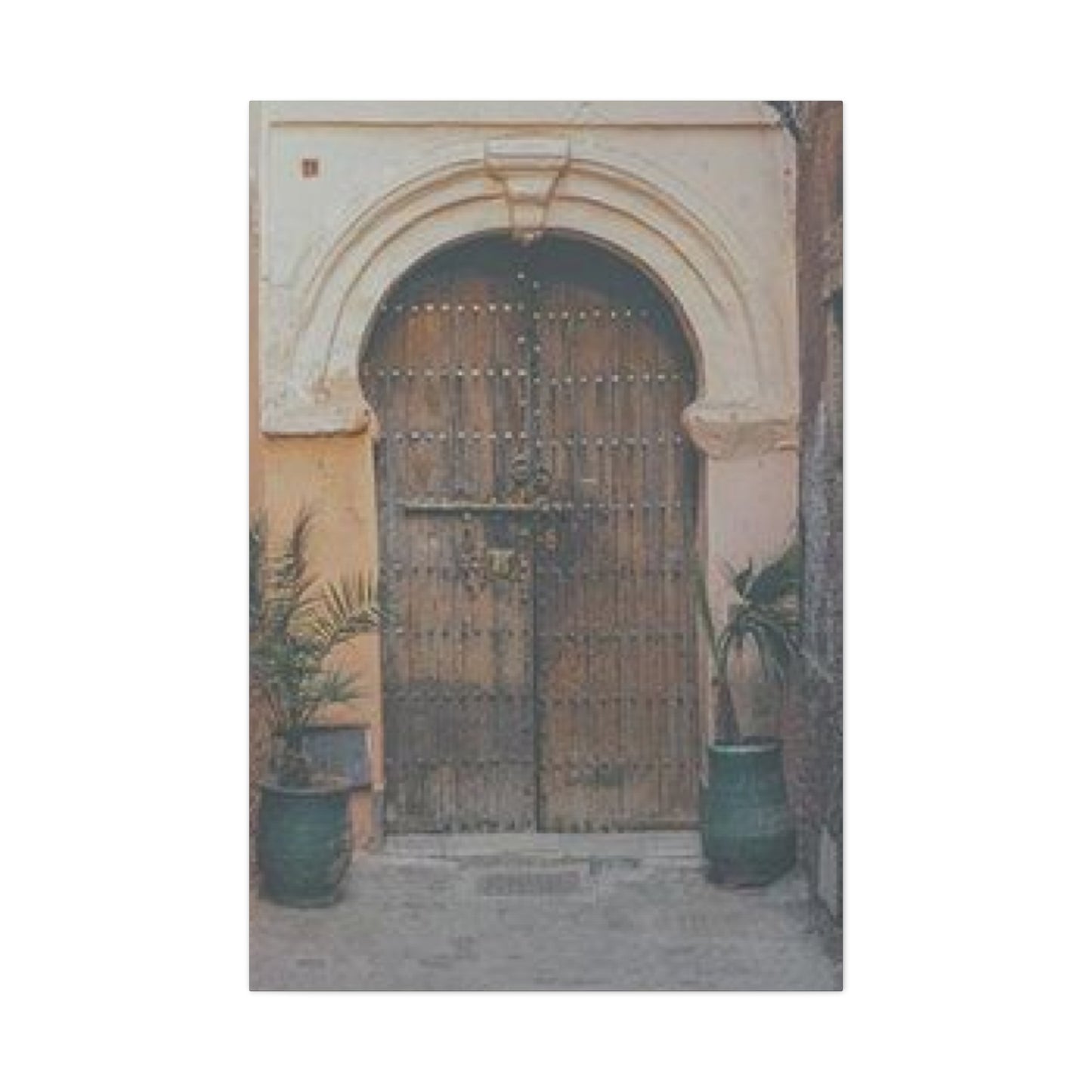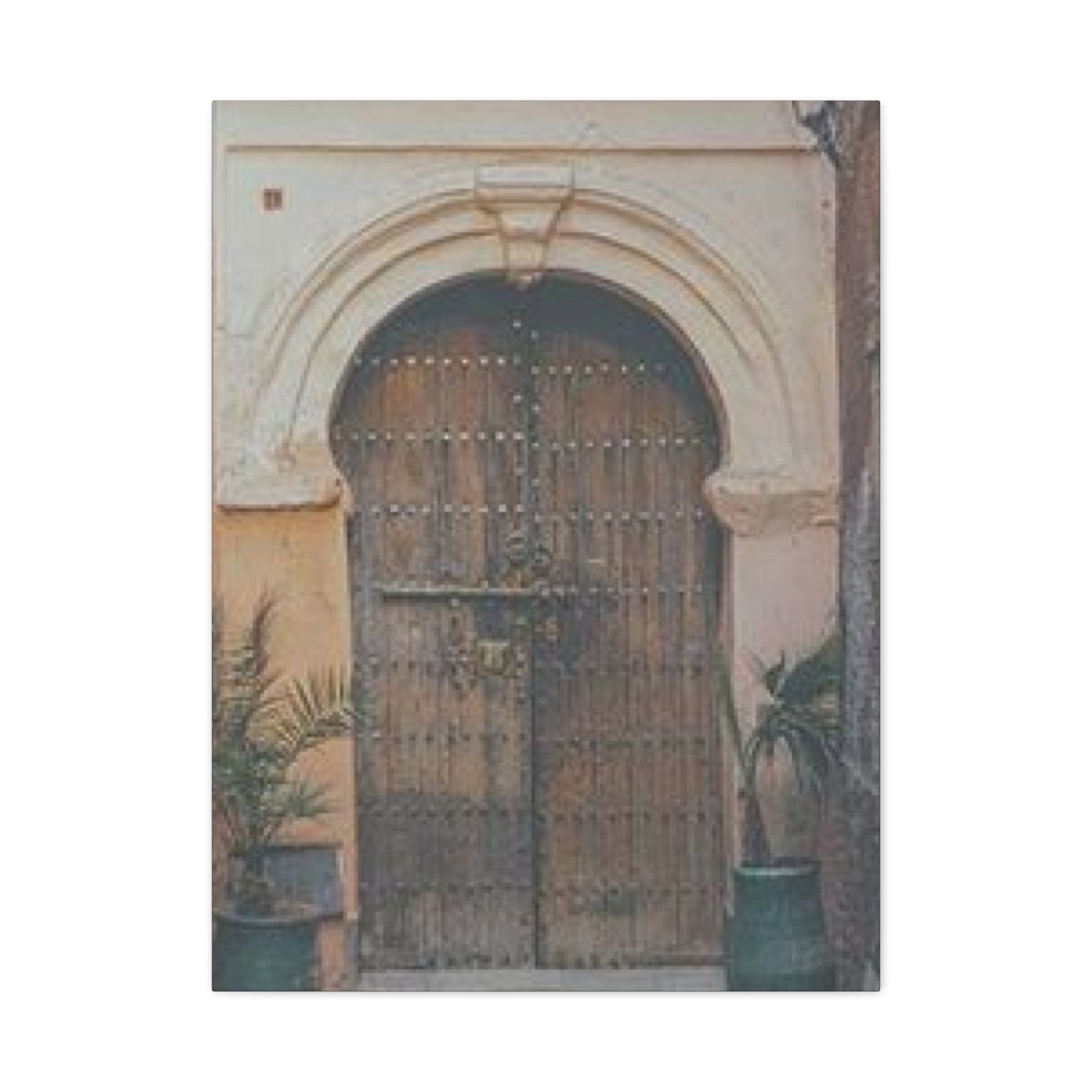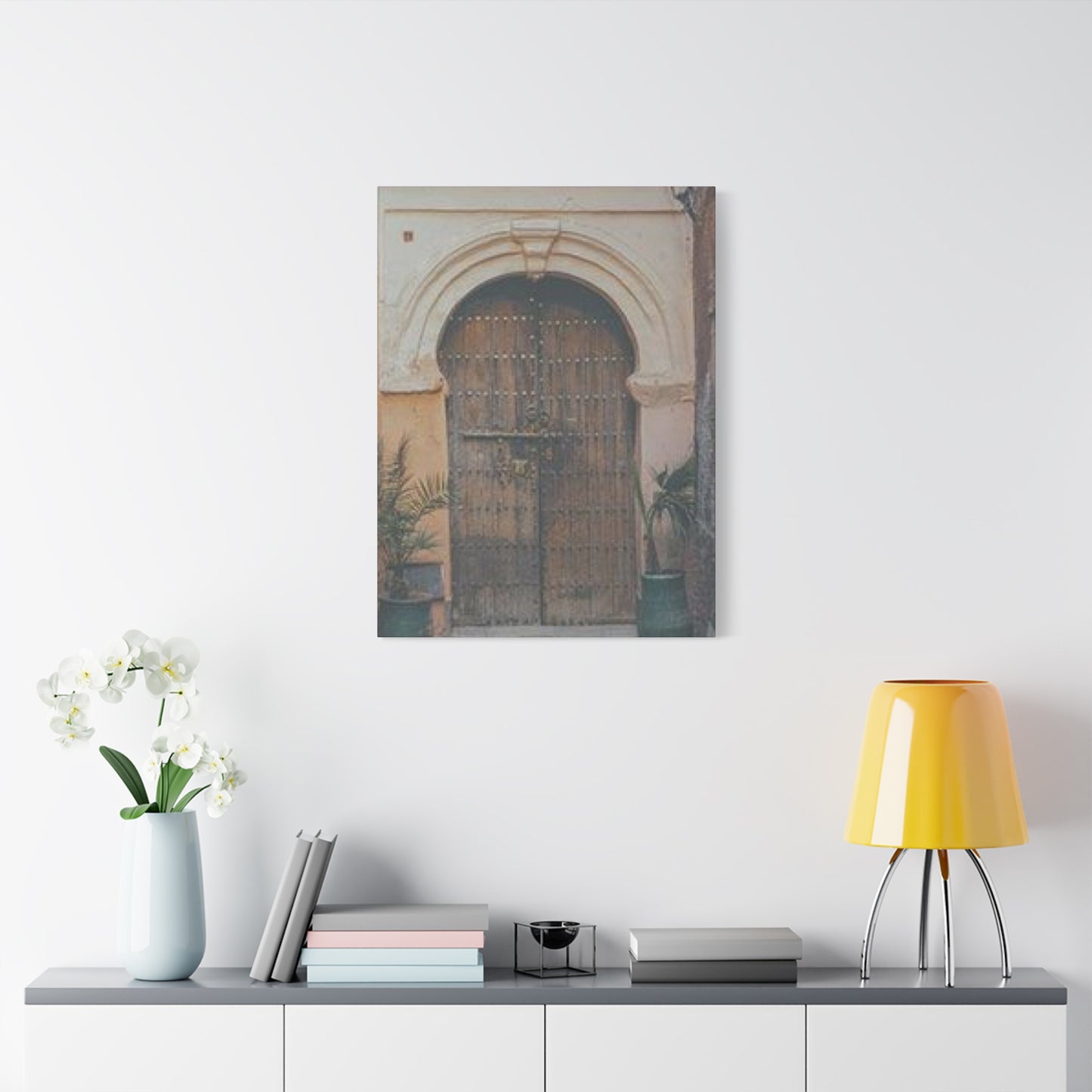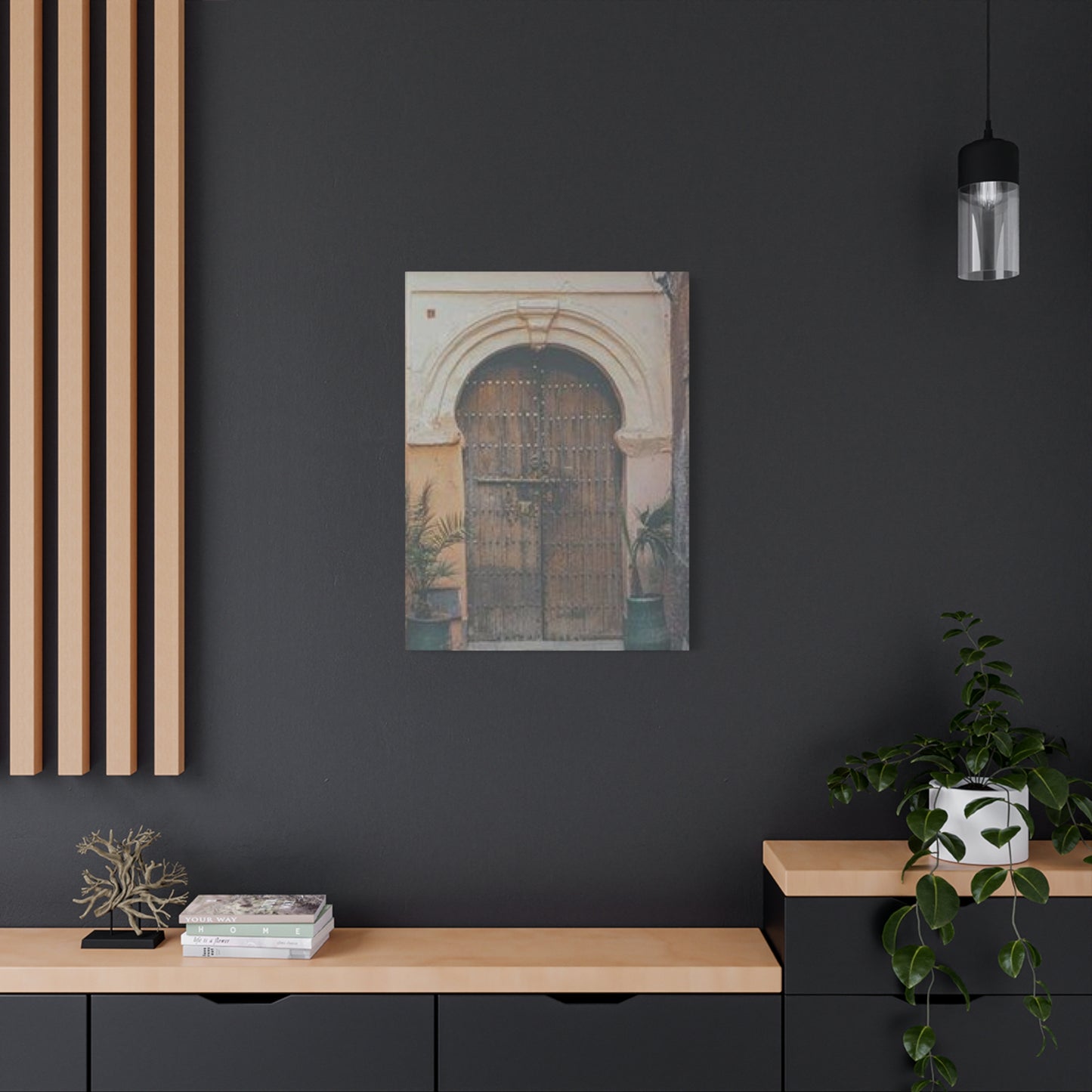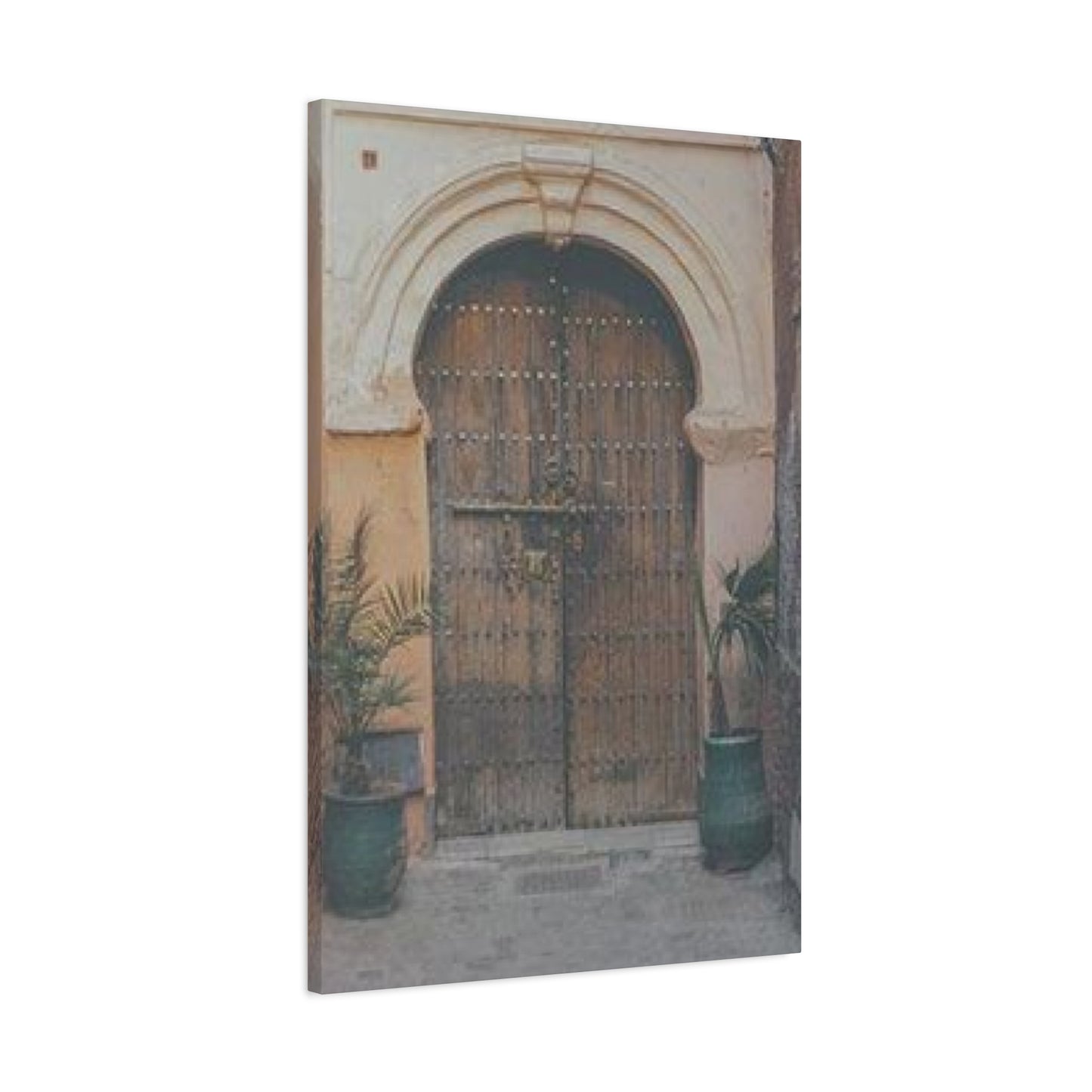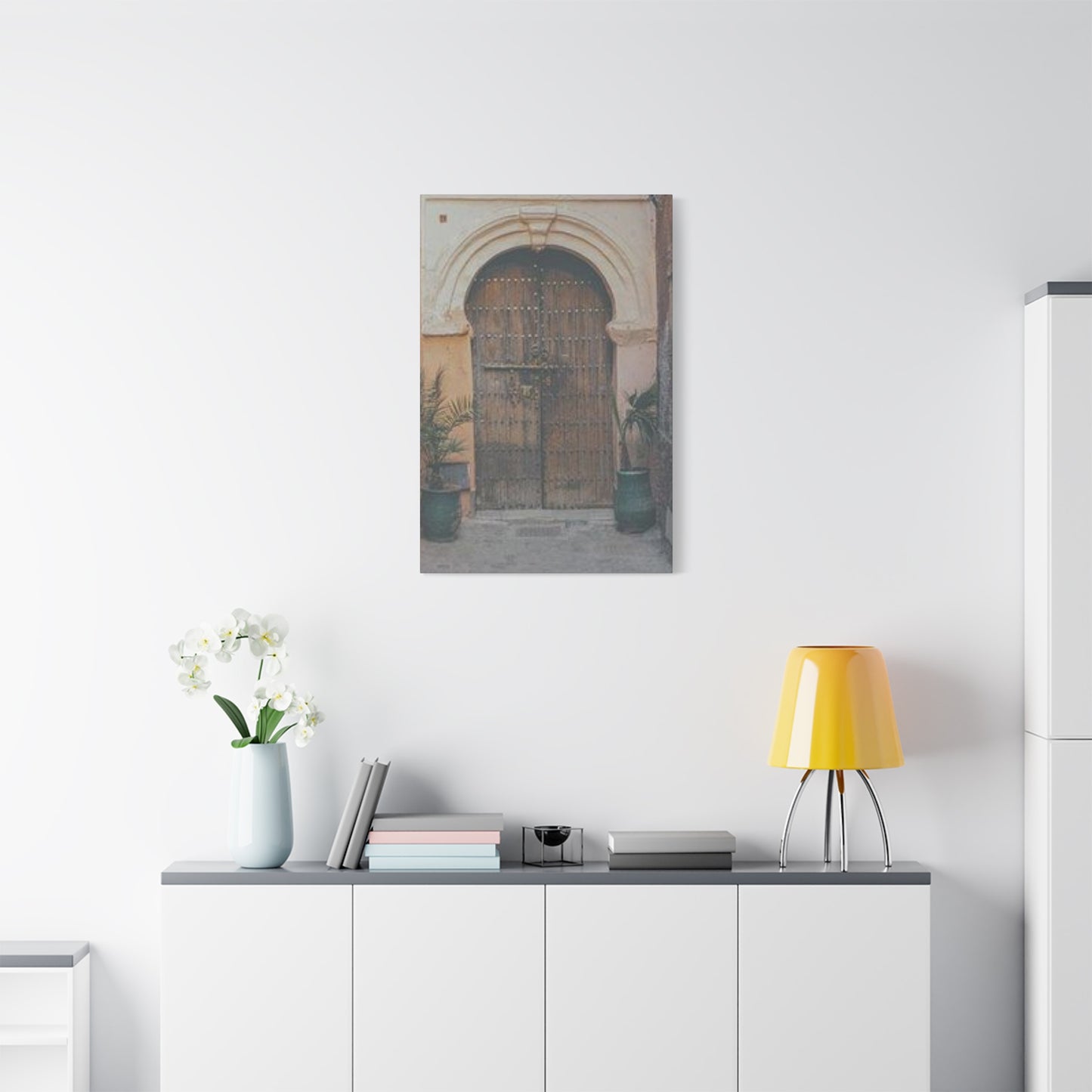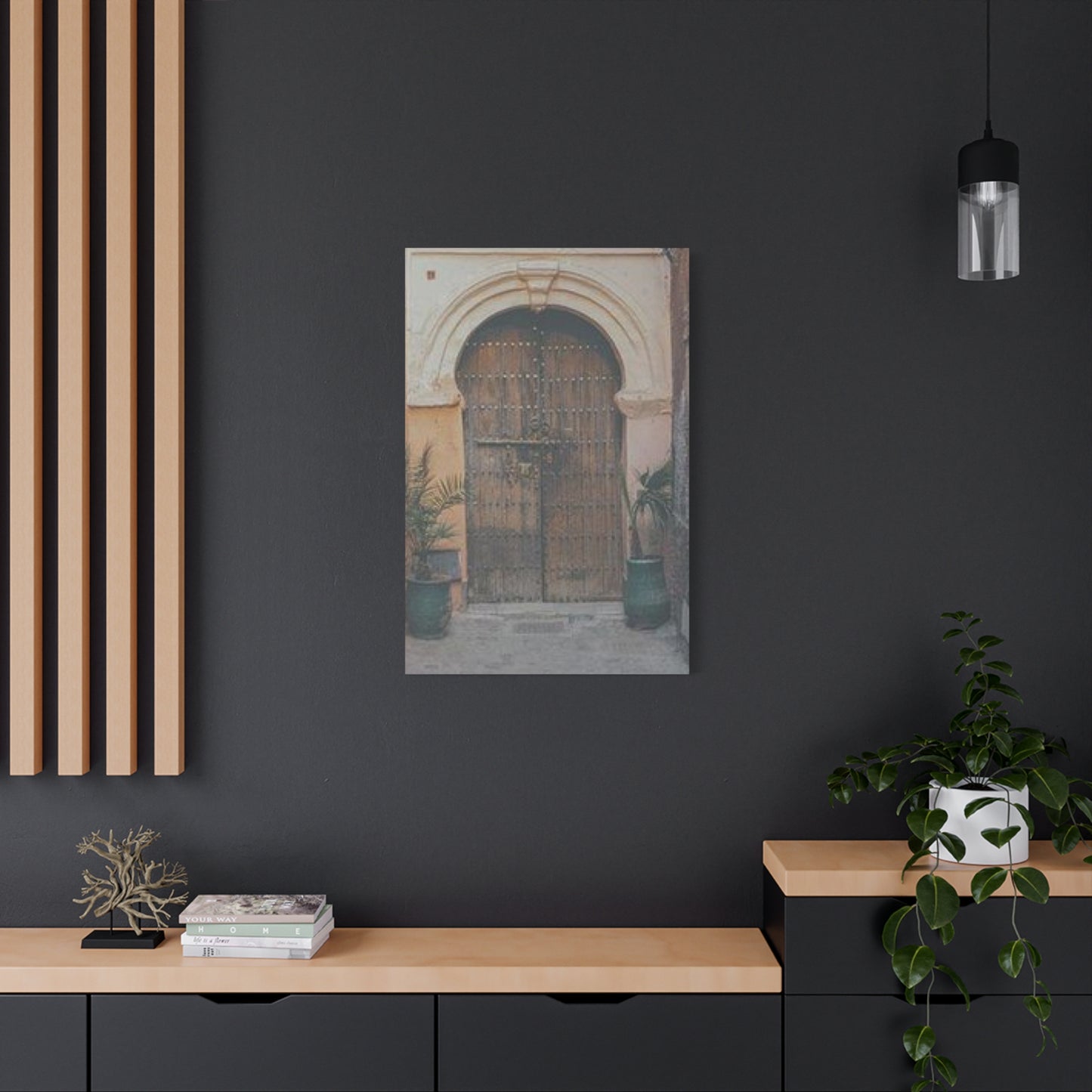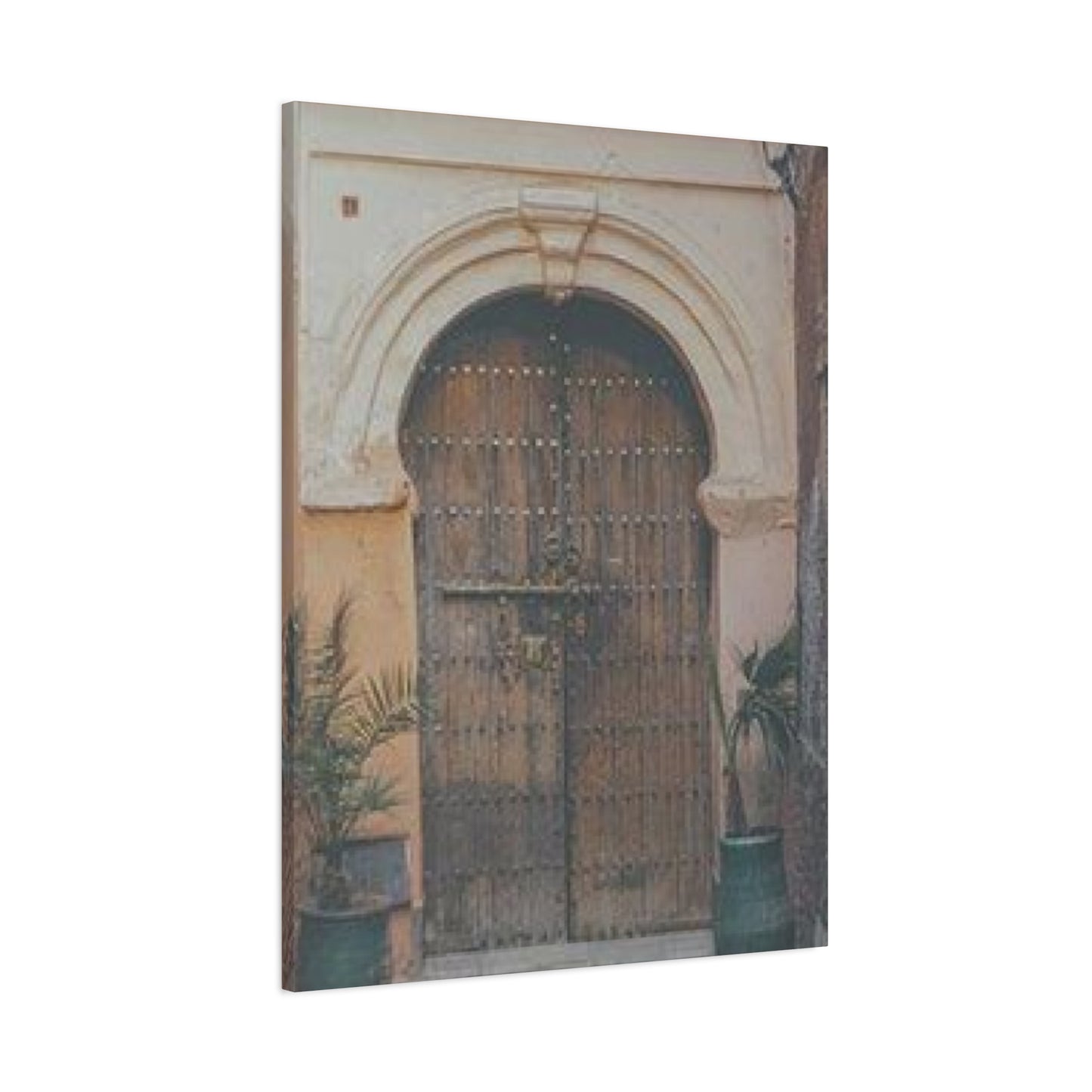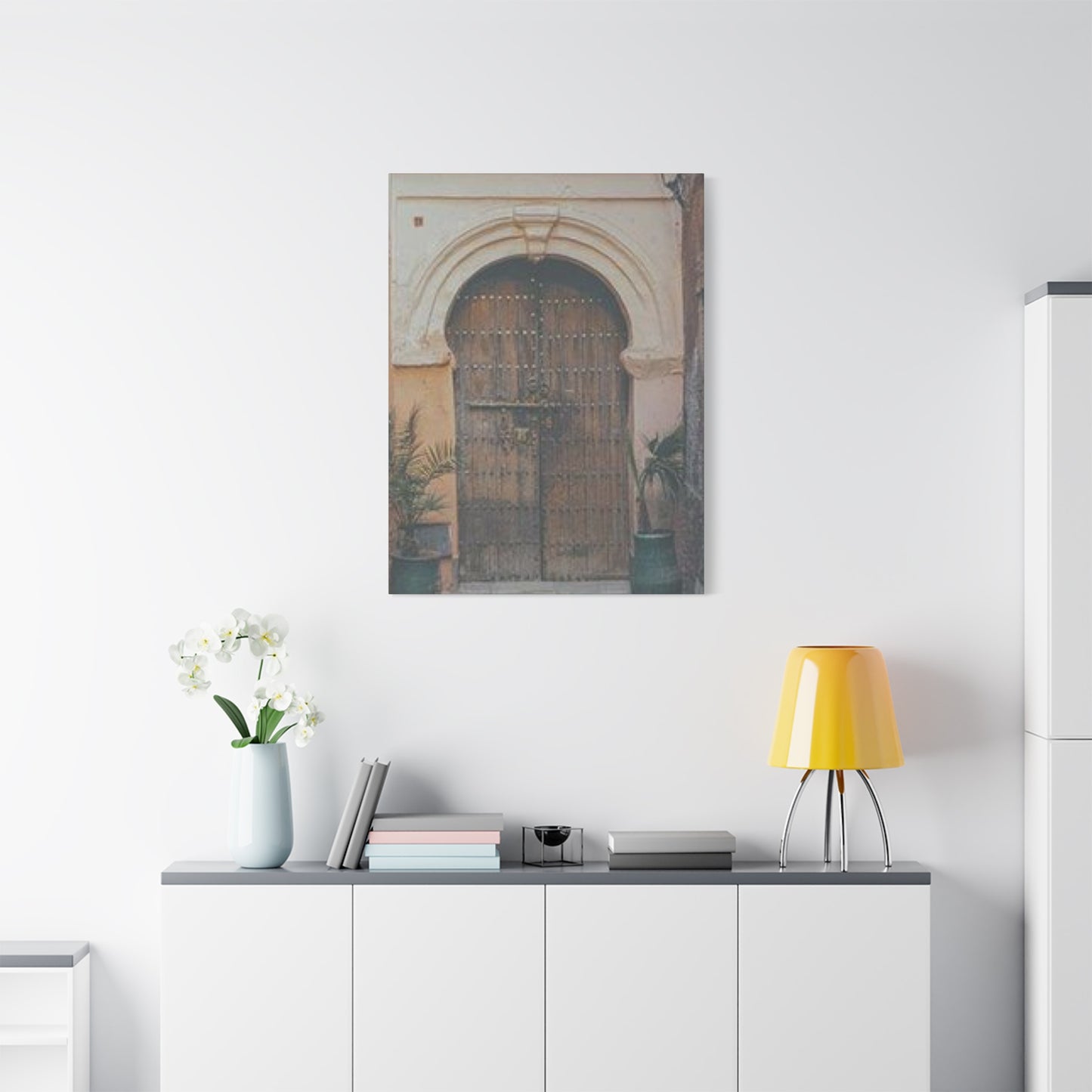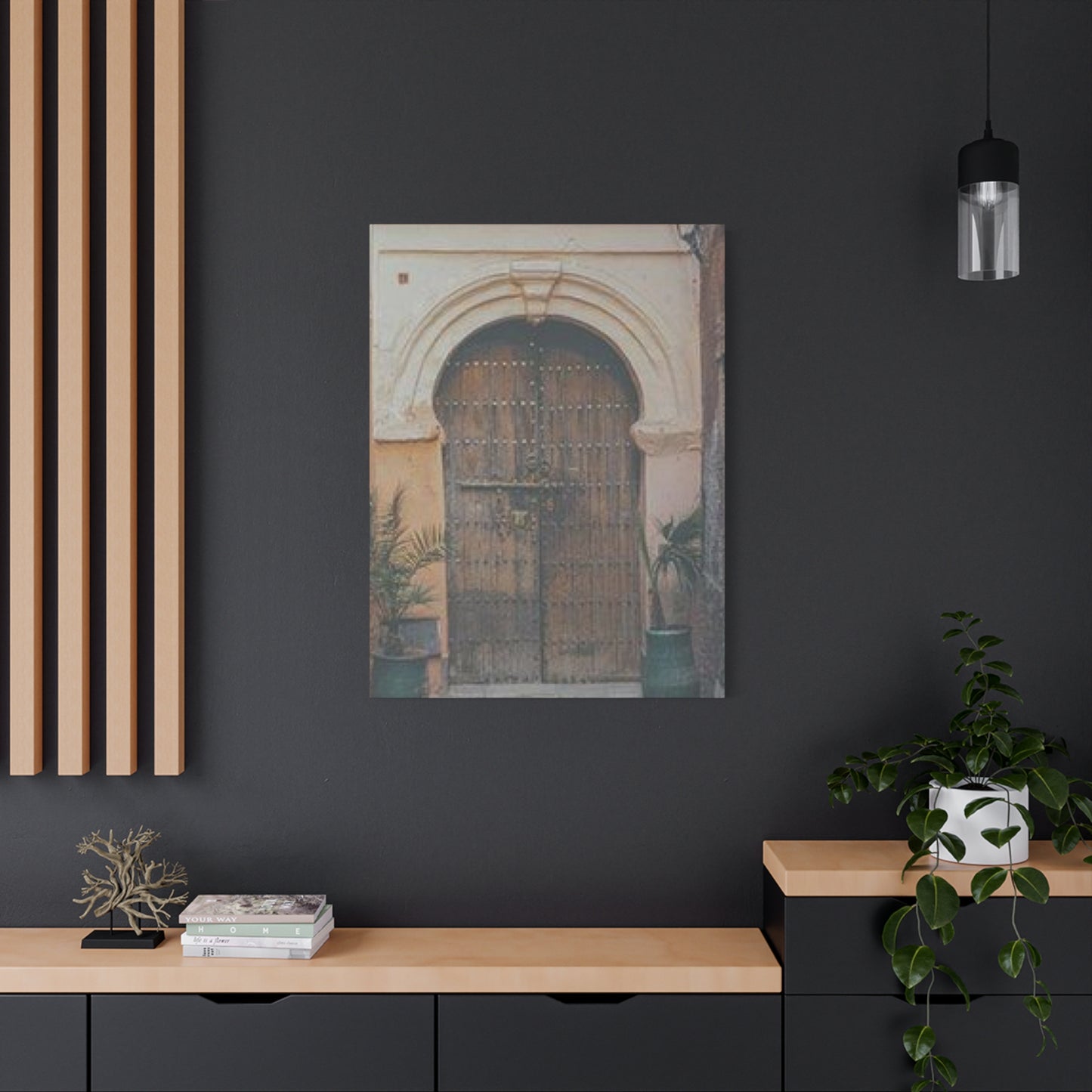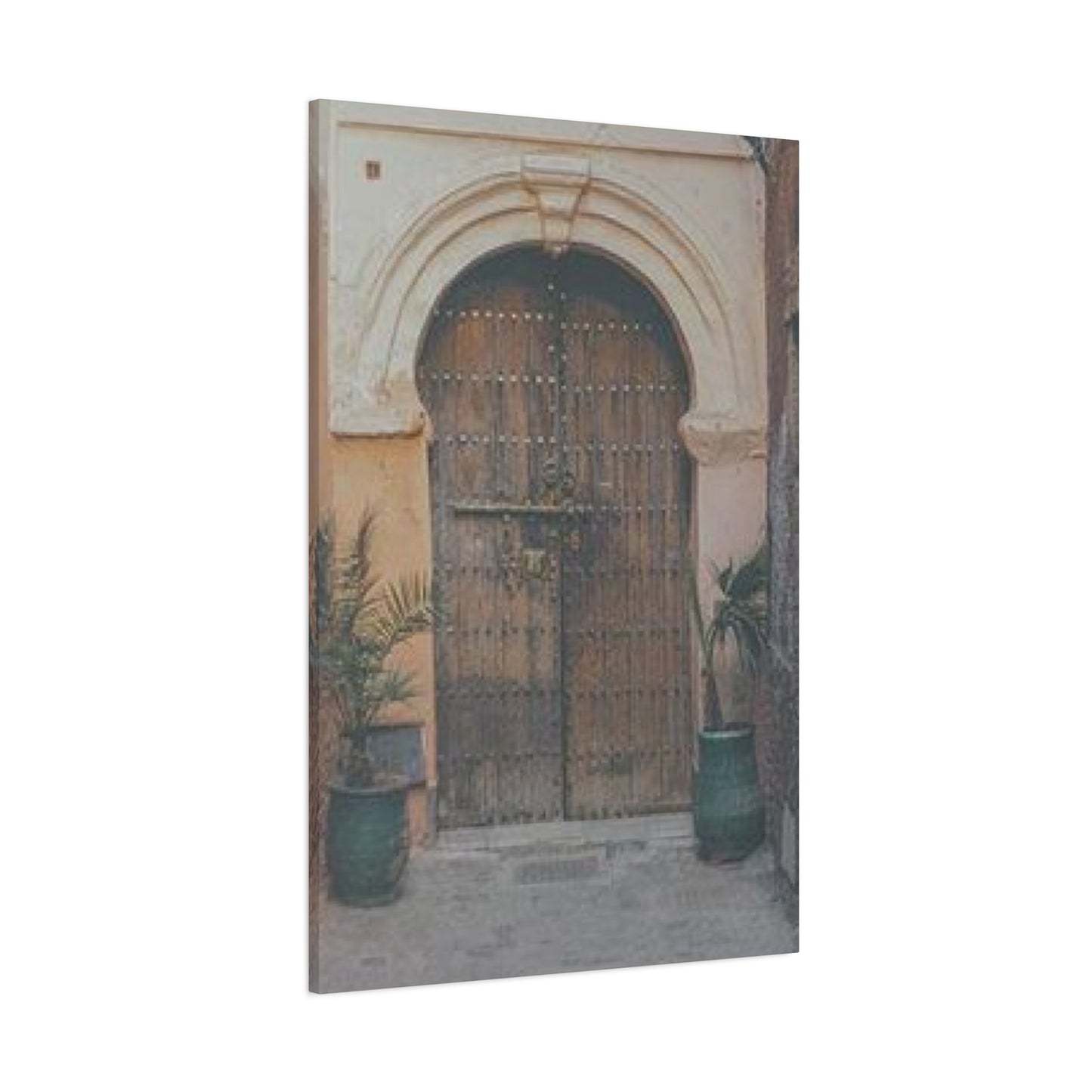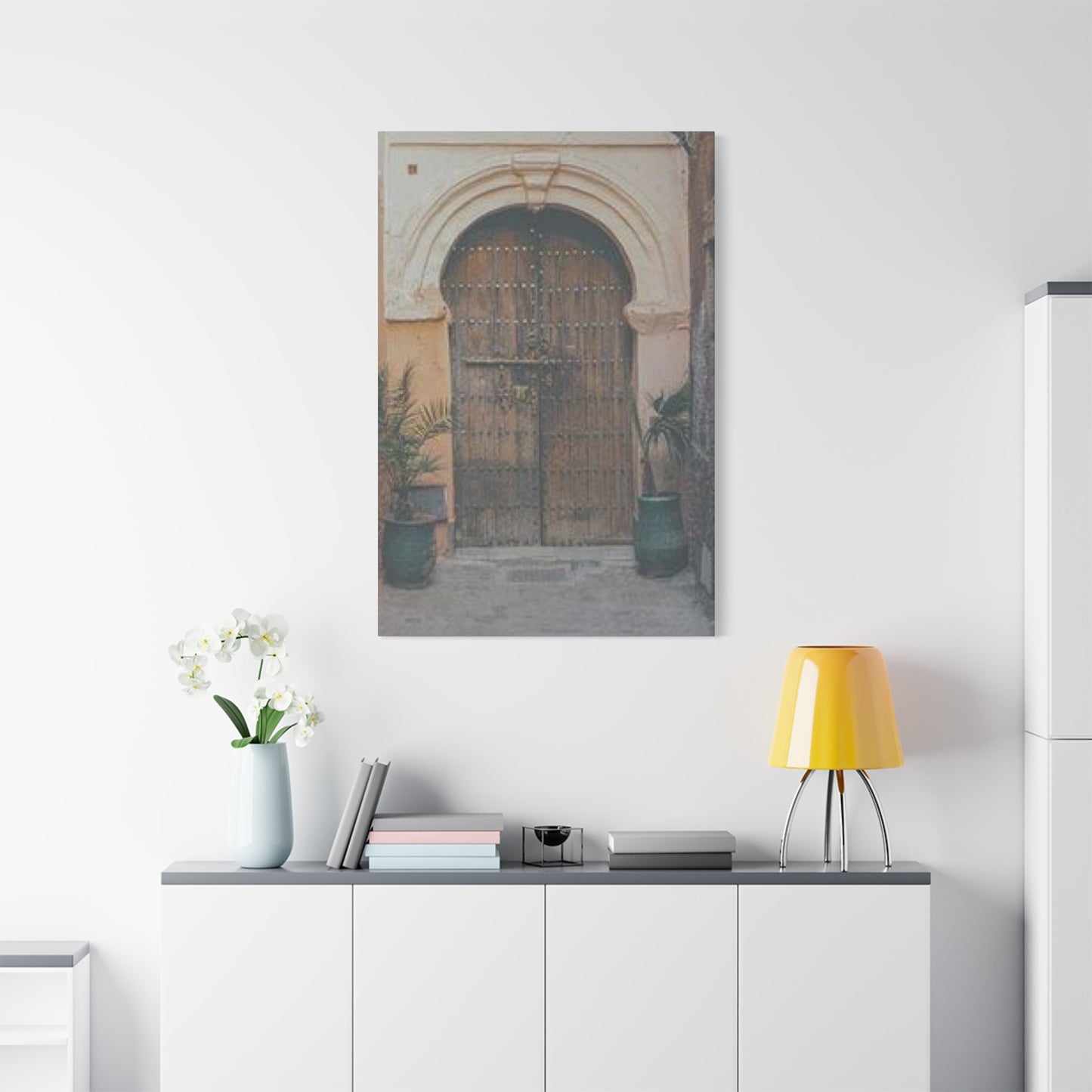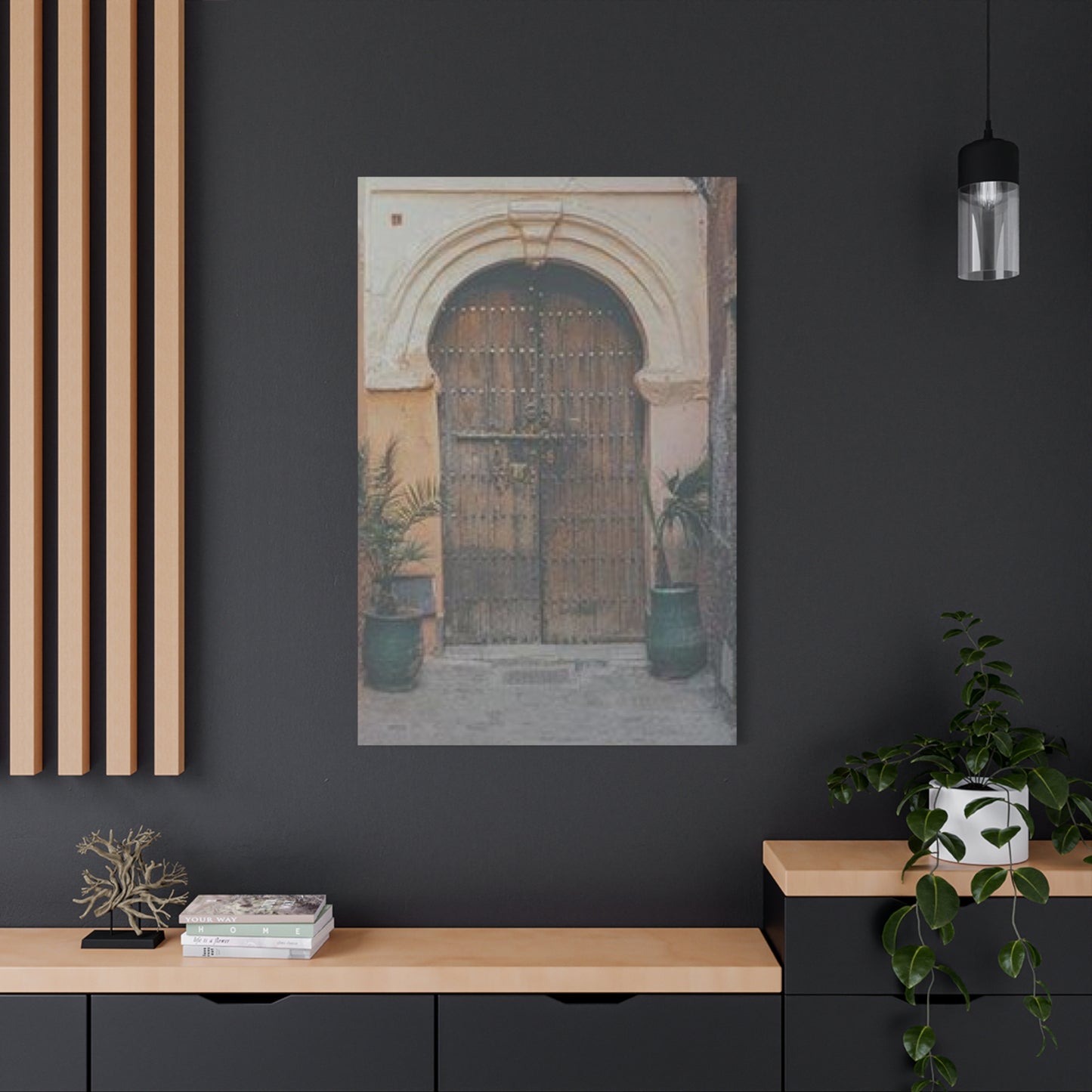Chic Doorway Architecture Wall Art: Interior Design with Character
The world of interior design has witnessed a remarkable evolution in recent decades, with architectural elements taking center stage in creating compelling visual narratives within living spaces. Among these elements, door architecture wall art has emerged as a particularly captivating medium that bridges the gap between structural beauty and artistic expression. This fascinating genre captures the essence of doorways, entrances, and portals that have served as focal points of human civilization for centuries.
Door architecture represents more than mere functional elements; these structures embody cultural heritage, artistic craftsmanship, and historical significance. When translated into wall art, these architectural marvels become accessible decorative pieces that can transform any interior space into a gallery of cultural appreciation and aesthetic refinement. The growing popularity of architectural door art reflects a deeper human connection to the spaces we inhabit and the stories they tell.
The appeal of door architecture wall art lies in its ability to evoke emotions and memories while serving as a sophisticated decorative element. Whether depicting the weathered wooden doors of medieval European towns, the ornate brass-studded entrances of Moroccan riads, or the colorful painted portals of Caribbean colonial homes, these artistic representations carry with them the power to transport viewers to distant places and times.
Contemporary interior designers have embraced door architecture art as a versatile design tool that can complement various aesthetic approaches, from minimalist modern spaces to richly layered traditional interiors. The diversity of styles, colors, and compositions available in this genre ensures that there is a perfect piece for every design vision and personal preference.
Elegant Canvas Prints Featuring Grand Doorway Designs
The sophistication of elegant canvas prints featuring grand doorway designs has revolutionized how we perceive and incorporate architectural elements into our living spaces. These refined artistic interpretations capture the majesty of imposing entrances, from palatial manor houses to sacred temples, presenting them in a format that enhances the visual appeal of contemporary interiors.
Canvas printing technology has advanced significantly, allowing for exceptional reproduction quality that preserves the intricate details and subtle color variations found in original architectural photography and artwork. The texture of canvas adds depth and authenticity to these prints, creating a tactile quality that paper prints cannot achieve. This medium particularly suits door architecture art because it mimics the substantial, enduring quality of the architectural subjects themselves.
Elegant doorway canvas prints often feature compositions that emphasize symmetry, proportion, and the interplay of light and shadow. These elements are fundamental to classical architecture and translate beautifully into two-dimensional art. The careful attention to framing and perspective in these prints ensures that viewers experience the same sense of awe and admiration they might feel when encountering these magnificent doorways in person.
The color palettes found in elegant doorway canvas prints tend toward sophisticated combinations that complement a wide range of interior design schemes. Rich jewel tones, muted earth colors, and classic monochromatic schemes are common, each serving different aesthetic purposes and emotional responses. These carefully curated color choices ensure that the artwork enhances rather than overwhelms the surrounding decor.
Scale plays a crucial role in the impact of elegant doorway canvas prints. Large-format pieces can serve as dramatic focal points, commanding attention and creating a sense of grandeur within a room. Smaller prints can be grouped together to create gallery walls or used as accent pieces that add layers of visual interest to a space. The flexibility in sizing options makes these prints suitable for various room configurations and design objectives.
Historic Architecture Art Celebrating Timeless Door Designs
Historic architecture art celebrating timeless door designs offers viewers a window into the rich tapestry of human civilization, preserving and presenting architectural heritage through artistic interpretation. These works capture the essence of doors that have witnessed centuries of history, serving as silent guardians of cultural memory and architectural evolution.
The historical significance of door architecture cannot be overstated. Throughout different periods and civilizations, doors have served not only as functional barriers but as canvases for artistic expression, symbols of status and wealth, and markers of cultural identity. Historic door architecture art preserves these important cultural artifacts for future generations while making them accessible to contemporary audiences.
Medieval cathedral doors, with their intricate stone carvings and massive iron hardware, represent one of the most compelling subjects in historic door architecture art. These magnificent portals, often featuring religious iconography and geometric patterns, demonstrate the sophisticated craftsmanship and spiritual devotion of their creators. When reproduced as wall art, these images bring a sense of reverence and timeless beauty to modern spaces.
Renaissance palace doorways offer another rich source of inspiration for historic architecture art. The period's emphasis on classical proportions, ornate detailing, and harmonious design principles created doorways that exemplify architectural perfection. These designs, when captured in art form, continue to inspire and educate viewers about the enduring principles of beautiful design.
Colonial architecture from various regions around the world provides diverse subject matter for historic door art. From the elegant Georgian doorways of early American architecture to the vibrant colonial doors of Latin America, these pieces showcase how different cultures adapted and interpreted architectural styles to suit their unique environments and aesthetic preferences.
The preservation aspect of historic door architecture art extends beyond mere documentation. These artistic interpretations often capture details and nuances that might be lost to time, weather, or human interference. By creating lasting artistic records of these architectural treasures, artists and photographers contribute to the broader effort of cultural preservation and education.
Vintage Wall Décor Featuring Classic Door Elements
Vintage wall décor featuring classic door elements has gained tremendous popularity among interior design enthusiasts who appreciate the charm and character of bygone eras. This style of decoration celebrates the patina of age, the beauty of weathered materials, and the stories embedded in architectural elements that have stood the test of time.
The appeal of vintage door décor lies in its ability to add instant character and depth to modern living spaces. These pieces often feature doors with peeling paint, worn wood, rustic hardware, and other signs of age that tell stories of the lives lived beyond these thresholds. The imperfections and wear patterns become part of the artistic appeal, creating pieces that are rich with narrative potential.
Collecting and displaying vintage door wall art allows homeowners to create spaces that feel lived-in and meaningful, even in newly constructed homes. The juxtaposition of vintage architectural elements against contemporary furnishings and finishes creates dynamic visual tension that enhances the overall design aesthetic of a space.
The color palettes associated with vintage door décor typically include muted, weathered tones that complement a wide range of interior color schemes. Faded blues, worn greens, dusty roses, and weathered whites are common choices that evoke the gentle aging process that gives vintage elements their distinctive character. These subtle colors work particularly well in spaces designed around neutral palettes or natural materials.
Authenticity is a key consideration in vintage door wall décor. The most compelling pieces are those that capture genuine aged elements rather than artificially distressed reproductions. This authenticity comes through in the natural wear patterns, the quality of the original craftsmanship, and the historical accuracy of the architectural details represented.
The versatility of vintage door décor makes it suitable for various interior design styles, from farmhouse and cottage aesthetics to industrial and eclectic approaches. The key is in the selection and placement of pieces that complement rather than compete with other design elements in the space.
Beautiful Photography Prints of Architectural Door Designs
Beautiful photography prints of architectural door designs represent a sophisticated intersection of artistic vision and documentary preservation, capturing the essence of remarkable doorways through the lens of skilled photographers. These works go beyond simple architectural documentation to create compelling visual narratives that celebrate the artistry and craftsmanship found in door design across cultures and time periods.
The photographic medium brings unique advantages to architectural door art, particularly in its ability to capture subtle details, textures, and lighting conditions that reveal the true character of these structural elements. Skilled architectural photographers understand how to work with natural light, shadows, and perspective to create images that are both technically excellent and emotionally resonant.
Color photography of architectural doors allows for the full appreciation of the rich palettes that characterize different cultural traditions and regional styles. The warm terracotta tones of Mediterranean doorways, the vibrant blues and greens of Caribbean colonial architecture, and the deep, rich woods of Nordic designs all benefit from accurate color reproduction that preserves their visual impact.
Black and white photography of door architecture offers a different but equally compelling approach, emphasizing form, texture, and composition while creating timeless images that focus on the fundamental design elements. This monochromatic approach can highlight the sculptural qualities of door architecture and create pieces that work well in contemporary minimalist interiors.
The technical quality of modern photography prints has reached exceptional standards, with archival inks and specialized papers ensuring longevity and color accuracy. This means that photography prints of door architecture can maintain their visual impact for decades, making them excellent investments for serious collectors and design enthusiasts.
Composition plays a crucial role in successful architectural door photography. The most compelling images are those that not only document the door itself but also capture its relationship to the surrounding architecture, the play of light and shadow, and the cultural context in which it exists.
Rustic Canvas Art Showcasing Weathered Door Character
Rustic canvas art showcasing weathered door character has become increasingly popular among those who appreciate the authentic beauty found in aged and naturally distressed architectural elements. This style of art celebrates the passage of time and the stories that weathered doors can tell through their worn surfaces, faded colors, and accumulated patina.
The appeal of weathered door art lies in its ability to bring a sense of history and authenticity to contemporary living spaces. These pieces often feature doors that have been exposed to decades or even centuries of weather, use, and natural aging processes, resulting in surfaces that are rich with texture and character. The imperfections become selling points, as they represent genuine life experiences and natural beauty.
Rustic door canvas art typically showcases doors constructed from natural materials, particularly wood and iron, which age gracefully and develop distinctive characteristics over time. The grain patterns in aged wood, the rust patinas on iron hardware, and the gentle weathering of painted surfaces all contribute to the visual appeal of these artistic subjects.
The color palettes associated with rustic weathered door art tend toward earth tones and naturally occurring colors that result from the aging process. Weathered grays, barn-wood browns, faded sage greens, and rust-tinged oranges are common elements that create warm, inviting color schemes suitable for various interior design approaches.
Canvas printing is particularly well-suited to rustic door art because the texture of the canvas surface complements the textural qualities of the subject matter. The slight roughness of canvas echoes the weathered surfaces of the doors themselves, creating a cohesive aesthetic experience that enhances the authenticity of the artwork.
The placement of rustic door canvas art can significantly impact its effectiveness within an interior design scheme. These pieces work particularly well in spaces that incorporate other natural materials and textures, such as reclaimed wood furniture, natural stone elements, or handwoven textiles.
Modern Canvas Wall Art with Contemporary Door Interpretations
Modern canvas wall art featuring contemporary door interpretations represents an exciting evolution in architectural art, where traditional door design concepts are reimagined through contemporary artistic sensibilities and current design trends. This genre bridges the gap between historical architectural appreciation and modern aesthetic preferences, creating pieces that resonate with contemporary audiences while maintaining connections to architectural heritage.
Contemporary door art often features clean lines, simplified forms, and bold color choices that reflect current design philosophies. These interpretations might take classical door proportions and present them in minimalist compositions, or they might abstract door elements into geometric patterns that suggest rather than literally represent architectural forms.
The color palettes used in modern door canvas art tend toward sophisticated, curated selections that complement contemporary interior design trends. Monochromatic schemes, bold accent colors, and unexpected color combinations are common approaches that create visual impact while maintaining design sophistication.
Scale and composition play crucial roles in modern door wall art, with many pieces designed to work within the context of contemporary architectural spaces that feature clean lines, open floor plans, and minimal ornamentation. The artwork must be substantial enough to hold its own in these uncluttered environments while contributing to rather than competing with the overall design aesthetic.
Digital art techniques and mixed media approaches have expanded the possibilities for contemporary door art, allowing artists to combine photographic elements with digital manipulation, graphic design principles, and abstract artistic concepts. This technological integration opens up new creative possibilities while maintaining the essential appeal of architectural subject matter.
The versatility of modern door canvas art makes it suitable for various contemporary interior design styles, from urban loft aesthetics to sophisticated corporate environments. The key is selecting pieces that complement the scale, color palette, and design philosophy of the intended space.
Colorful Architectural Prints Celebrating Vibrant Door Designs
Colorful architectural prints celebrating vibrant door designs offer an exuberant approach to door architecture art, focusing on the joyful and energetic aspects of colorful door traditions found around the world. These pieces celebrate the human impulse to add beauty and personal expression to even the most functional architectural elements, creating art that is both visually striking and emotionally uplifting.
Many cultures have traditions of painting doors in bright, cheerful colors that reflect community values, personal preferences, or symbolic meanings. From the famous colorful doors of Dublin to the rainbow-hued entrances of Buenos Aires neighborhoods, these vibrant portals represent human creativity and cultural expression at their most accessible and democratic level.
The psychological impact of colorful door art cannot be understated. Bright, saturated colors have been shown to elevate mood, increase energy levels, and create positive emotional responses. When incorporated into interior spaces, colorful door prints can serve as focal points that energize entire rooms and create atmosphere that encourages social interaction and creative thinking.
Color theory plays an important role in the selection and placement of vibrant door art. Understanding how different colors interact with each other and with existing interior color schemes ensures that these bold pieces enhance rather than overwhelm their surroundings. Complementary color relationships, analogous color schemes, and strategic use of neutral balancing elements all contribute to successful integration.
The printing technology used for colorful door art must be capable of accurately reproducing saturated colors while maintaining color stability over time. High-quality archival inks and specialized printing processes ensure that these vibrant pieces maintain their visual impact for years to come, making them worthwhile investments for collectors and design enthusiasts.
Cultural sensitivity and appreciation are important considerations when selecting and displaying colorful door art. These pieces often represent specific cultural traditions and community practices, and displaying them with understanding and respect for their cultural significance adds depth and meaning to their decorative function.
Antique Wall Poster Art Featuring Historical Door Elements
Antique wall poster art featuring historical door elements represents a unique category of architectural art that combines the appeal of vintage poster design with the timeless beauty of historical door architecture. These pieces often take the form of reproduction advertisements, travel posters, or educational materials that feature doors as central design elements, creating artwork that is both decoratively appealing and historically informative.
The poster art format brings a distinctive aesthetic approach to door architecture art, often incorporating typography, graphic design elements, and compositional techniques that reflect the design sensibilities of specific historical periods. This approach creates pieces that are not only about doors but also about the cultural and commercial contexts in which they existed.
Vintage travel posters featuring architectural doors represent one popular subcategory of this art form. These pieces often promoted destinations by highlighting their distinctive architectural character, with doors serving as symbolic representations of cultural identity and historical heritage. The combination of architectural beauty and nostalgic travel imagery creates particularly appealing artwork for contemporary homes.
Educational posters featuring door architecture represent another interesting approach, presenting architectural information in accessible, visually appealing formats. These pieces might showcase different door styles, construction techniques, or historical periods, combining aesthetic appeal with educational content that can spark conversation and learning.
The graphic design elements typical of poster art, including bold typography, simplified color palettes, and clear compositional hierarchy, create pieces that work well in contemporary interior design contexts. The clean, organized visual structure of poster art complements modern design sensibilities while the historical content adds depth and interest.
Reproduction quality is crucial for antique poster art, as the appeal often lies in the authentic feel of vintage graphic design and printing techniques. High-quality reproductions that capture the subtle color variations, paper textures, and printing characteristics of original posters create the most satisfying viewing experience.
Charming Canvas Décor with Architectural Door Themes
Charming canvas décor with architectural door themes focuses on the more intimate and approachable aspects of door architecture art, emphasizing pieces that create warm, welcoming atmospheres within residential spaces. This category includes artwork that celebrates the homey, comfortable, and personally meaningful aspects of door design, from cottage garden gates to welcoming front entrances.
The concept of charm in door architecture art relates to the emotional response these pieces evoke in viewers. Charming door art typically features subjects that suggest warmth, welcome, comfort, and human connection. These might include doors adorned with seasonal decorations, surrounded by flowering gardens, or showing signs of loving care and maintenance.
Scale and intimacy play important roles in charming door canvas décor. While some architectural art aims to impress through grandeur and monumentality, charming pieces work through their ability to create personal connections and evoke memories of home, safety, and belonging. This makes them particularly suitable for residential spaces where comfort and emotional connection are primary design goals.
The color palettes associated with charming door décor tend toward warm, inviting tones that create cozy, comfortable atmospheres. Soft pastels, warm earth tones, and gentle jewel colors are common choices that contribute to the overall sense of charm and approachability that defines this category of door art.
Seasonal and decorative elements often play important roles in charming door canvas art. Doors adorned with wreaths, surrounded by blooming flowers, or showing seasonal decorations add layers of meaning and emotional connection that enhance their appeal as decorative art pieces.
The placement and grouping of charming door canvas art can significantly impact its effectiveness. These pieces often work well in multiples, creating gallery walls or themed groupings that reinforce the welcoming, homey atmosphere they're designed to create.
Traditional Wall Art Prints Featuring Classical Door Designs
Traditional wall art prints featuring classical door designs celebrate the enduring principles of architectural beauty that have guided door design for centuries. These pieces focus on the timeless elements of proportion, symmetry, craftsmanship, and decorative detail that characterize the finest examples of traditional door architecture from various cultural traditions.
Classical door design principles, derived from ancient Greek and Roman architecture, continue to influence door design today because they are based on mathematical relationships and proportional systems that create inherently pleasing visual compositions. Traditional door art that captures these principles serves both decorative and educational functions, preserving and transmitting important design knowledge.
The craftsmanship evident in traditional door designs represents a level of skill and attention to detail that is increasingly rare in contemporary construction. Traditional door art celebrates this craftsmanship while making it accessible to modern audiences who might not otherwise encounter such exemplary work.
Regional variations in traditional door design provide rich subject matter for wall art prints. From the ornate carved doors of Gothic cathedrals to the elegant proportioned entrances of Georgian townhouses, each tradition offers distinctive approaches to solving the basic challenge of creating beautiful, functional doorways.
Material appreciation is an important aspect of traditional door art, as these pieces often showcase the natural beauty of wood, stone, and metal in their original contexts. The way light plays across carved surfaces, the grain patterns in different wood species, and the patinas that develop on various metals all contribute to the visual appeal of traditional door designs.
The educational value of traditional door art prints makes them particularly appropriate for spaces where learning and cultural appreciation are emphasized. Libraries, educational institutions, and homes where cultural heritage is valued all benefit from the presence of artwork that connects viewers to important architectural traditions.
Entrance Architecture Painting Depicting Grand Doorway Artistry
Entrance architecture painting depicting grand doorway artistry represents the more formal and artistic interpretation of door architecture, where trained artists apply traditional painting techniques to create original works that capture not just the physical appearance of doors but also their emotional and symbolic significance. These paintings go beyond documentation to offer personal artistic interpretations that can reveal new aspects of familiar architectural subjects.
The painted medium allows for artistic interpretation and creative expression that photography cannot achieve. Painters can emphasize certain aspects of their subjects, adjust lighting conditions, enhance or subdue colors, and create compositions that serve their artistic vision while remaining true to the essential character of the architectural subjects.
Oil painting, with its rich colors and ability to capture subtle gradations of tone and texture, has traditionally been favored for architectural subjects. The medium's capacity for detail work makes it particularly suitable for capturing the intricate decorative elements that characterize grand doorway architecture.
Watercolor painting offers a different approach to entrance architecture art, with its transparency and flowing quality creating more impressionistic interpretations that can capture the essence and atmosphere of architectural subjects rather than their precise details. This medium works particularly well for subjects where light and atmosphere are important compositional elements.
Contemporary painting techniques and mixed media approaches have expanded the possibilities for entrance architecture art, allowing artists to combine traditional skills with modern materials and concepts. These hybrid approaches can create unique pieces that honor architectural heritage while expressing contemporary artistic sensibilities.
The commissioning process for original entrance architecture paintings allows for customization and personalization that reproduction art cannot provide. Clients can work with artists to create pieces that capture specific architectural subjects, incorporate personal color preferences, or commemorate meaningful doorways from their own experience.
Luxury Canvas Wall Décor with Sophisticated Door Motifs
Luxury canvas wall décor with sophisticated door motifs caters to discriminating collectors and design enthusiasts who seek artwork that combines exceptional quality with refined aesthetic appeal. These pieces represent the premium segment of door architecture art, characterized by superior materials, expert craftsmanship, and subjects that exemplify the highest levels of architectural achievement.
The concept of luxury in door architecture art encompasses several factors, including the quality of the original subject matter, the skill of the artist or photographer, the technical excellence of the reproduction process, and the overall presentation and framing of the finished piece. Each of these elements must meet the highest standards to qualify as luxury door décor.
Subject selection for luxury door art typically focuses on the most exceptional examples of door architecture, from the ornate portals of royal palaces to the masterfully crafted entrances of renowned architects. These subjects must demonstrate not only technical excellence but also historical significance and aesthetic merit that justifies their premium positioning.
Production quality for luxury door canvas art involves the use of museum-quality materials and processes that ensure longevity and maintain the highest standards of color accuracy and detail reproduction. This includes archival canvas substrates, fade-resistant inks, and protective treatments that preserve the artwork's appearance over time.
Presentation elements, including professional framing, mounting systems, and accompanying documentation, contribute significantly to the luxury appeal of door architecture art. These elements not only protect and enhance the artwork but also communicate its premium status and cultural significance to viewers.
The target audience for luxury door wall décor includes serious art collectors, interior designers working on high-end projects, and homeowners who view art as both decoration and investment. This market demands exceptional quality and is willing to pay premium prices for artwork that meets their exacting standards.
Classic Architecture Wall Prints Showcasing Timeless Door Beauty
Classic architecture wall prints showcasing timeless door beauty focus on the enduring appeal of door designs that have maintained their aesthetic relevance across decades or centuries. These pieces celebrate the qualities that make certain door designs truly timeless: perfect proportions, quality materials, expert craftsmanship, and the ability to enhance rather than date their architectural contexts.
The concept of timeless beauty in door architecture relates to design principles that transcend temporary fashion trends and continue to please viewers regardless of changing stylistic preferences. These principles, derived from classical architecture and refined through centuries of practice, create doors that remain beautiful and relevant across time periods.
Proportion and scale play crucial roles in timeless door design, with the most enduring examples following mathematical relationships that create inherently pleasing visual compositions. These proportional systems, whether based on classical orders or traditional building practices, ensure that doors relate harmoniously to their architectural contexts and human users.
Material quality and craftsmanship contribute significantly to the timeless appeal of classic door designs. Doors constructed from premium materials using traditional techniques not only age more gracefully but also display a level of quality and attention to detail that continues to impress modern viewers accustomed to mass-produced building components.
Classic door wall prints serve both decorative and educational functions, preserving examples of superior design and craftsmanship while making them accessible to contemporary audiences. These pieces can inspire both appreciation for traditional skills and standards as well as the application of timeless principles to contemporary design projects.
The versatility of classic door prints makes them suitable for various interior design approaches, from traditional settings where they reinforce historical themes to contemporary spaces where they provide sophisticated contrast and cultural depth.
Artistic Canvas Photography Capturing Door Architecture Details
Artistic canvas photography capturing door architecture details represents a specialized approach to architectural art that focuses on the intimate aspects of door design rather than overall compositions. These pieces celebrate the craftsmanship, materials, and decorative elements that give doors their distinctive character and cultural significance.
Detail photography requires specialized skills and equipment to capture the subtle textures, intricate patterns, and fine craftsmanship that characterize exceptional door architecture. Macro photography techniques, specialized lighting equipment, and post-processing expertise all contribute to creating images that reveal aspects of door architecture that might be overlooked in wider compositional approaches.
The artistic value of detail photography lies in its ability to transform functional architectural elements into abstract compositions that can be appreciated purely for their visual qualities. A close-up image of carved wood grain, oxidized metal hardware, or painted surface textures can create compelling artwork that works in contemporary design contexts while maintaining connections to architectural heritage.
Lighting plays a crucial role in successful detail photography of door architecture, as different lighting conditions can dramatically alter the appearance and mood of the same architectural elements. Photographers must understand how to work with natural light, artificial lighting, and mixed lighting conditions to achieve the desired aesthetic effects.
The selection of details for artistic documentation requires a trained eye that can recognize compositionally strong elements within larger architectural contexts. Not all door details make compelling standalone artwork, and successful detail photographers must develop the ability to identify and isolate the most visually interesting and artistically viable subjects.
Post-processing and printing techniques can significantly enhance the artistic impact of door detail photography, allowing photographers to adjust contrast, enhance textures, and optimize color relationships to create the most compelling final images.
Old World Architecture Wall Art Celebrating Historical Craftsmanship
Old World architecture wall art celebrating historical craftsmanship pays homage to the exceptional skill and artistry that characterize pre-industrial building traditions. These pieces focus on door architecture from periods when individual craftsmen applied traditional techniques passed down through generations, creating unique works of functional art that demonstrated both technical skill and creative vision.
The term "Old World" in this context refers to European architectural traditions that developed over centuries of craft guild systems, apprenticeship training, and regional building practices. These traditions produced door architecture characterized by hand-carved details, traditional joinery techniques, and decorative elements that reflected local cultural values and aesthetic preferences.
Craftsmanship appreciation has gained renewed relevance in contemporary culture as people recognize the value of traditional skills and handmade quality in an increasingly automated world. Old World door art serves as a reminder of the human capacity for creating beauty through skilled manual work and patient attention to detail.
The educational value of Old World door architecture art extends beyond aesthetic appreciation to include technical knowledge about traditional building practices, material properties, and construction techniques that modern audiences might not otherwise encounter. These pieces can inspire interest in traditional crafts and historical building methods.
Regional variations in Old World door architecture provide rich subject matter for wall art collections, with different geographical areas contributing distinctive approaches to door design and decoration. From the Gothic stonework of French cathedrals to the painted folk art of German farmhouses, each region developed unique aesthetic traditions.
The preservation aspect of Old World door art is particularly important given the ongoing loss of historical buildings and traditional craft knowledge. By documenting and celebrating these architectural achievements, artists and collectors contribute to cultural preservation efforts while creating beautiful decorative art.
Stylish Wall Décor Prints with Modern Door Design Elements
Stylish wall décor prints featuring modern door design elements represent the contemporary evolution of door architecture art, focusing on current design trends, innovative materials, and cutting-edge aesthetic approaches that characterize 21st-century door design. These pieces appeal to audiences who appreciate forward-looking design while maintaining connections to architectural traditions.
Modern door design elements include clean lines, minimal ornamentation, innovative material combinations, and integration with contemporary building technologies such as smart home systems and energy-efficient construction methods. These elements create doors that are not only aesthetically current but also functionally advanced.
The aesthetic philosophy behind modern door design often emphasizes simplicity, functionality, and honest expression of materials and construction methods. This approach creates doors that derive their beauty from perfect proportions, quality materials, and expert execution rather than applied decorative elements.
Material innovation plays a significant role in contemporary door design, with new materials and manufacturing processes enabling design possibilities that were not available to previous generations. These innovations, when captured in wall art, can educate viewers about current technological capabilities while providing aesthetic inspiration.
Color and finish options in modern door design have expanded dramatically, with new coating technologies enabling unprecedented durability and aesthetic possibilities. Modern door art can showcase these innovations while demonstrating how contemporary color choices work within current interior design trends.
The integration of modern door design with overall architectural contexts creates opportunities for wall art that shows how contemporary doors contribute to cohesive design visions that encompass entire buildings and landscape settings.
Large Format Architecture Canvas Art for Statement Walls
Large format architecture canvas art featuring door subjects creates dramatic focal points that can anchor entire room designs while celebrating the monumental aspects of door architecture. These substantial pieces require careful consideration of scale, composition, and placement to achieve maximum visual impact while maintaining harmonious relationships with their architectural contexts.
The psychology of scale in interior design recognizes that large artworks can dramatically alter the perceived proportions and emotional character of interior spaces. Large format door architecture art can make rooms appear more spacious, create sense of grandeur, and establish commanding focal points that organize other design elements around them.
Composition considerations for large format door art differ significantly from smaller pieces, as viewers will experience these works from multiple distances and viewing angles. Successful large format compositions must work both as overall statements visible from across a room and as collections of interesting details that reward closer examination.
The technical challenges of producing large format canvas art include maintaining image resolution, color consistency, and print quality across substantial surface areas. Specialized printing equipment and expertise are required to produce large format pieces that meet professional quality standards.
Installation and display considerations for large format door art include structural requirements for supporting substantial weight, lighting considerations that ensure even illumination across large surfaces, and spatial planning that provides appropriate viewing distances and sight lines.
The investment aspects of large format door architecture art make these pieces particularly suitable for commercial installations, public spaces, and high-end residential projects where the substantial visual impact justifies the premium pricing typically associated with large format artwork.
Architectural Design Wall Posters Featuring Door Elements
Architectural design wall posters featuring door elements serve both decorative and educational functions, presenting door architecture information in accessible formats that appeal to design professionals, students, and enthusiasts. These pieces often combine technical drawings, historical information, and aesthetic imagery to create comprehensive presentations of door design knowledge.
Educational posters focusing on door architecture might present comparative studies of different door styles, construction techniques, or historical periods. These reference materials serve as both learning tools and decorative elements that enhance spaces dedicated to design education or professional practice.
Technical drawing presentations of door architecture can showcase the underlying geometric principles, proportional relationships, and construction details that characterize excellent door design. These analytical presentations appeal to audiences interested in the technical aspects of architectural design.
Historical timeline posters trace the evolution of door design across different periods and cultures, presenting complex information in visually appealing formats that make architectural history accessible to general audiences. These educational tools can inspire deeper interest in architectural heritage while serving decorative functions.
Contemporary design poster approaches might present door architecture through infographic formats, comparative analyses, or trend presentations that help viewers understand current developments in door design and their relationships to broader architectural movements.
The poster format's accessibility and affordability make architectural door information available to broader audiences than traditional art formats, supporting educational goals while providing attractive decorative options for various budget levels.
Decorative Canvas Wall Art Celebrating Door Craftsmanship
Decorative canvas wall art celebrating door craftsmanship focuses on the artistic and technical aspects of door construction, highlighting the skills, tools, and traditions that create exceptional door architecture. These pieces honor the craftspeople whose expertise transforms raw materials into functional works of art that serve both practical and aesthetic purposes.
Craftsmanship appreciation has gained cultural significance as people recognize the value of traditional skills and handmade quality in an increasingly automated world. Door craftsmanship art serves as a tribute to human creativity and skill while preserving knowledge about traditional building practices.
The tools and techniques used in traditional door construction represent accumulated knowledge passed down through generations of craftspeople. Decorative art that showcases these tools and techniques helps preserve this cultural knowledge while creating visually interesting subject matter for contemporary wall art.
Material transformation processes, from raw lumber to finished doors, provide compelling subject matter for craftsmanship art. These pieces can document the various stages of door construction while celebrating the skill required to transform basic materials into architectural elements of lasting beauty.
Detail work and decorative elements in door construction require specialized skills that distinguish exceptional craftspeople from ordinary workers. Art that focuses on these details helps viewers appreciate the level of skill and artistry involved in creating superior door architecture.
Contemporary craftsmanship movements that preserve and adapt traditional door-making skills provide ongoing subject matter for decorative art that celebrates both historical knowledge and current practice.
European Door Architecture Prints Showcasing Continental Elegance
European door architecture prints showcasing continental elegance celebrate the rich architectural heritage of European door design traditions that have influenced architectural development worldwide. These pieces focus on the distinctive characteristics that define European approaches to door design, from medieval fortress entrances to elegant neoclassical portals.
The diversity of European door architecture reflects the continent's complex cultural history, with different regions developing distinctive approaches influenced by local materials, climate conditions, cultural traditions, and historical circumstances. This diversity provides rich subject matter for architectural art collections.
Gothic door architecture, with its pointed arches, elaborate stone tracery, and religious iconography, represents one of Europe's most distinctive contributions to door design. These monumental portals demonstrate the integration of structural engineering with artistic vision that characterizes the best European architecture.
Renaissance and Baroque door designs showcase European mastery of classical architectural principles combined with innovative decorative approaches. These periods produced doors that exemplify perfect proportions while incorporating elaborate decorative programs that reflect the cultural values and artistic capabilities of their creators.
Regional folk traditions in European door architecture provide more intimate and accessible subject matter, showcasing how ordinary people adapted and personalized architectural elements to reflect local customs and individual preferences.
Contemporary European door design continues to evolve these historical traditions while incorporating modern materials and construction techniques, creating ongoing subject matter for architectural art that bridges historical appreciation with current practice.
Conclusion:
Chic doorway architecture wall art offers a distinctive way to infuse interior spaces with charm, sophistication, and historical depth. By celebrating the artistry of doors and entryways, this décor transforms walls into storytelling canvases that reflect culture, tradition, and timeless beauty. Whether showcasing ornate European arches, rustic farmhouse doors, or sleek modern entries, doorway wall art goes beyond decoration—it embodies character and individuality within your home.
The unique appeal of doorway-themed art lies in its symbolism. Doors represent opportunity, transition, and discovery, making them powerful visual metaphors for spaces that welcome and inspire. Displaying this artwork in living rooms, hallways, or even entryways creates an atmosphere of intrigue and openness, inviting both residents and guests to view interiors as journeys of style and imagination. Each piece becomes more than an image—it is an expression of identity and aspiration.
From a design perspective, doorway wall art enhances interiors by blending architectural detail with artistic flair. Intricate arches, textured wood, or vibrant painted doors add depth and visual richness to minimalist spaces, while black-and-white photography of historic doorways complements modern or industrial designs. In eclectic settings, bold doorway prints with cultural motifs contribute vibrancy and global character, reinforcing the idea that art can celebrate both heritage and modern living.
The versatility of doorway artwork also makes it a valuable design choice. Large-scale canvases can serve as striking focal points that anchor entire rooms, while smaller framed prints offer subtle sophistication in transitional spaces. Paired with complementary décor such as mirrors, rugs, or accent lighting, doorway wall art helps create cohesive environments that feel polished and thoughtfully curated.
Beyond its visual appeal, this artwork fosters emotional resonance. The imagery of doors symbolizes fresh starts, hidden stories, and unexplored possibilities. Incorporating such symbolism into your interiors not only enriches the atmosphere but also serves as a daily reminder of growth, resilience, and curiosity. This makes doorway wall art particularly meaningful for spaces designed to inspire reflection, creativity, or personal connection.

















